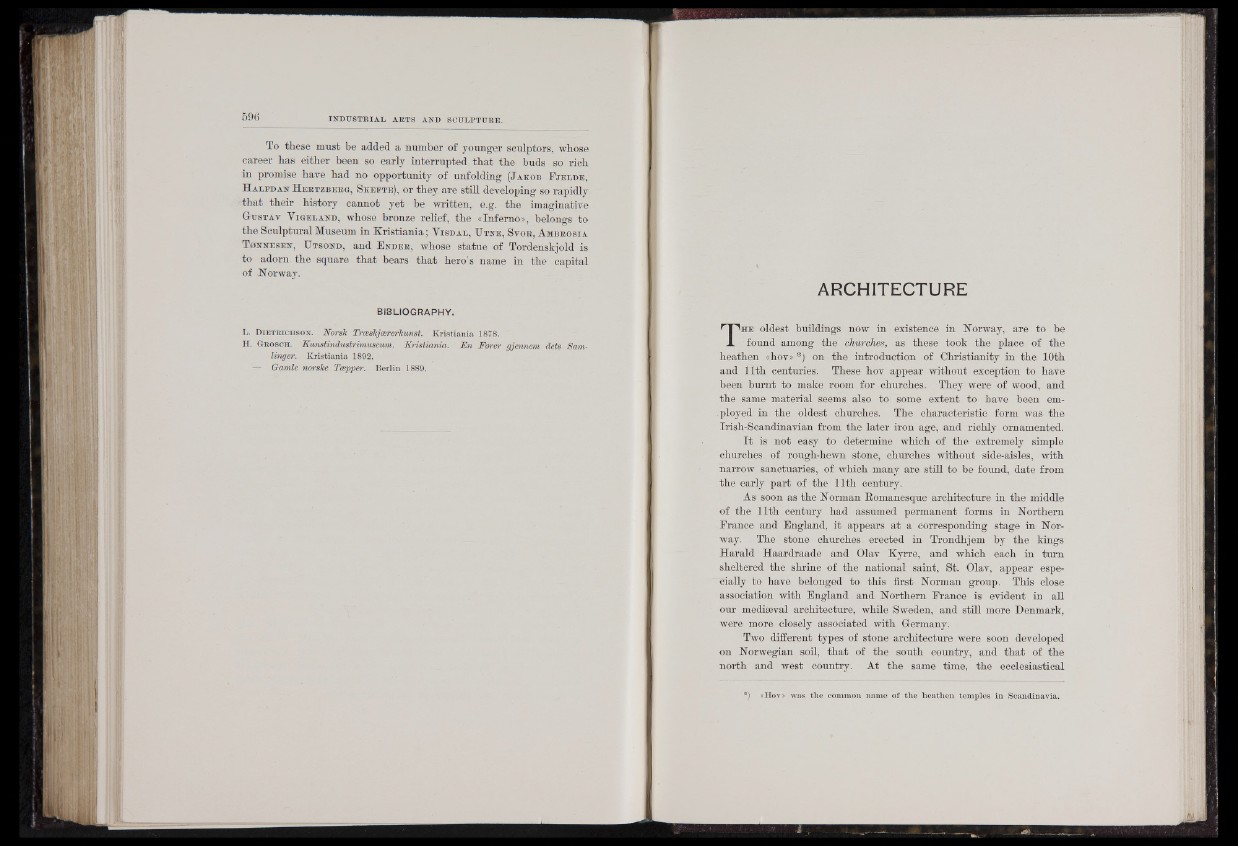
To these must be added a number of younger sculptors, whose
career has either been so early interrupted that the buds so rich
in promise have had no opportunity of unfolding ( J a k o b F j e l d e ,
H a l f d a n H e r t z b e r o , S k e f t e ) , or they are still developing so rapidly
that their history cannot yet be written, e.g. the imaginative
G u s t a v Y i g e l a n d , whose bronze relief, the «Inferno», belongs to
the Sculptural Museum in Eristiania; V i s d a l , U t n e , S v o r , A m b r o s i a
T o n n e s e n , U t s o n d , and E n d e r , whose statue of Tordenskjold is
to adorn the square that bears that hero’s name in the capital
of Norway.
BIBLIOGRAPHY.
L. D i e t r i c h s o n . Norsk Trceskjasrerlcunst. Kristiania 1878.
H. G r o s c h . Kumtindustrimuseum. Kristiania. En Furer gjennem (lets Sam-
linger. Kristiania 1892.
— (Ianile, norske Tcepper. Berlin 1889.
ARCHITECTURE
r I Ihe oldest buildings now in existence in Norway, are to be
A found among the churches, as these took the place of the
heathen «hov» *) on the introduction of Christianity in the 10th
and 11th centuries. These hov appear without exception to have
been burnt to make room for churches. They were of wood, and
the same material seems also to some extent to have been employed
in the oldest churches. The characteristic form was the
Irish-Scandinavian from the later iron age, and richly ornamented.
I t is not easy to determine which of the extremely simple
churches of rough-hewn stone, churches without side-aisles, with
narrow sanctuaries, of which many are still to be found, date from
the early part of the 11th century.
As soon as the Norman Romanesque architecture in the middle
of the 11th century had assumed permanent forms in Northern
France and England, it appears at a corresponding stage in Norway.
The stone churches erected in Trondhjem by the kings
Harald Haardraade and Olav Kyrre, and which each in turn
sheltered the shrine of the national saint, St. Olav, appear especially
to have belonged to this first Norman group. This close
association with England and Northern France is evident in all
our mediaeval architecture, while Sweden, and still more Denmark,
were more closely associated with Germany.
Two different types of stone architecture were soon developed
on Norwegian soil, that of the south country, and that of the
north and west country. At the same time, the ecclesiastical
*) «Hov» was the common name of the heathen temples in Scandinavia.